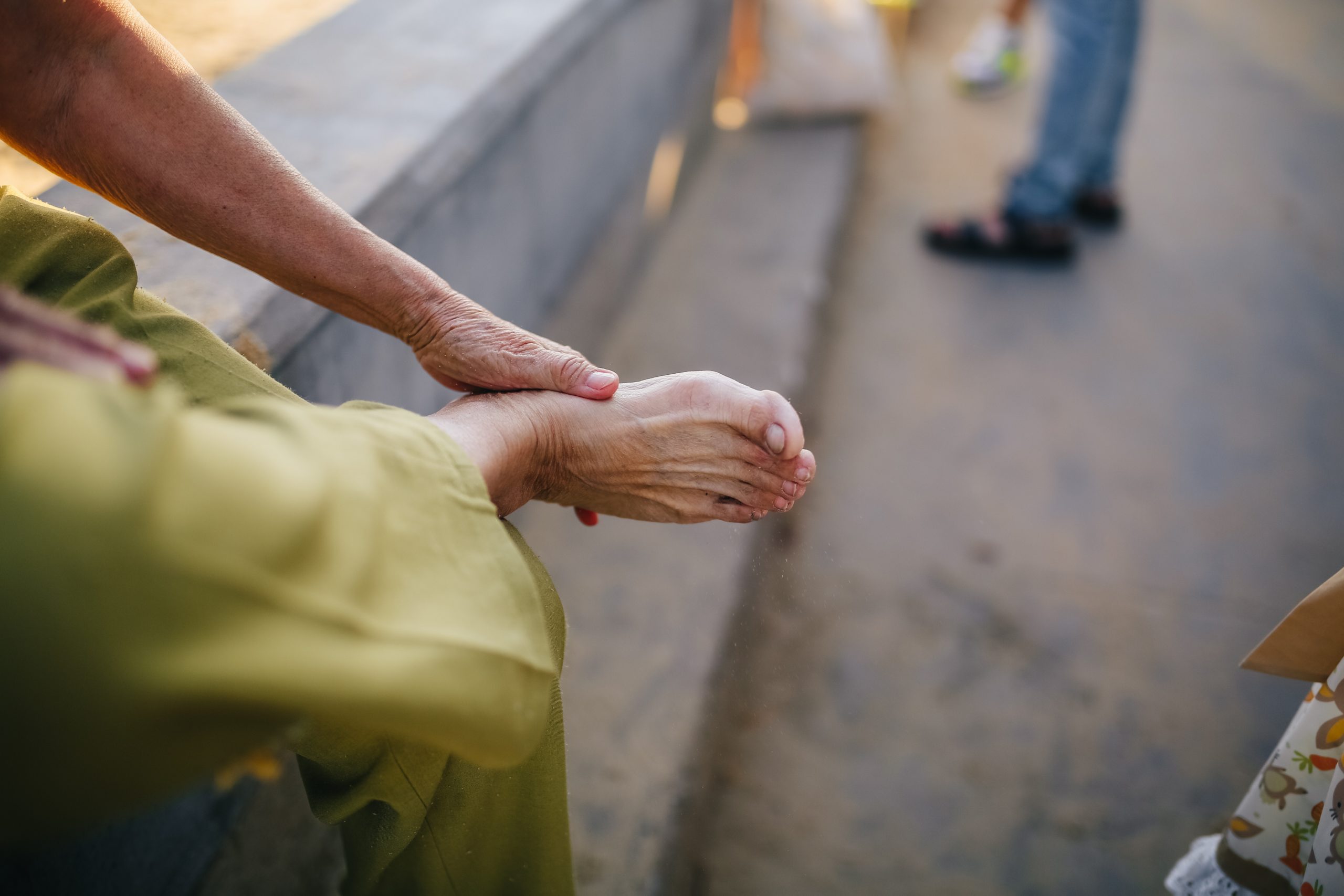
Diabetes often causes poor blood supply to your legs and feet. As a result, your skin may become thinner, break more easily, heal more slowly, and become more vulnerable to infection. Diabetes can also lead to nerve damage, reducing the feeling in your feet. If this happens, you may not notice minor injuries that could cause an infection. Even a small cut or blister can lead to serious problems when you have diabetes. To prevent dangerous infections, you need to inspect and wash your feet daily.
Signs/Symptoms
If you have diminished blood supply to your feet, you may notice redness, warmth, or sores on your feet that heal slowly or not at all. If you have lost feeling in your feet, you may not feel any pain.
What You Should Do
- Do not go barefoot. Bare feet are easily injured.
- Check your feet daily for blisters, cuts, and redness.
- Wash your feet gently with warm (not hot) water and mild soap every day. Pat your feet and the area between your toes until completely dry.
- Apply moisturizing lotion to the dry skin on your feet and to dry brittle toenails.
- Trim your toenails straight across. Do not dig under them or around the cuticle.
- Do not cut corns or calluses or try to remove them with medicine unless your doctor approves.
- Wear clean cotton socks or stockings every day. Make sure they are not too tight.
- Wear leather shoes that fit properly and have enough cushioning. To break in new shoes without injuring your feet, wear them just a few hours each day.
- If you find a minor scrape, cut, or break in the skin on your feet, keep it and the skin around it clean and dry.
- When you remove an adhesive bandage, be sure not to injure the skin around it.
- Check any wound several times a day to make sure it is healing.
- Follow your doctor’s diet and exercise plan carefully, and take your medicines exactly as directed.
Call Your Doctor If…
- An injury is not healing or you notice redness, numbness, burning, or tingling.
- Your feet always feel cold.
- You develop pain or cramps in your legs and feet.
One condition that is commonly associated with diabetes is obesity. Endoscopic Sleeve Gastroplasty (ESG) is an incisionless procedure that can help you or your loved one with diabetes or obesity issues eat better and lose weight. Click here to learn more about this treatment and book an appointment with experienced professionals.
